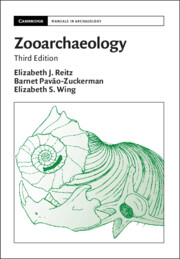Refine search
Actions for selected content:
1521 results
Chapter 6 - Reading “Manners”
-
- Book:
- Emerson, the Philosopher of Oppositions
- Published online:
- 20 November 2025
- Print publication:
- 22 January 2026, pp 117-136
-
- Chapter
- Export citation
Two - Marriage and Gender in the Political Moment
-
- Book:
- Marriage and the Moral Imagination
- Published online:
- 12 December 2025
- Print publication:
- 22 January 2026, pp 54-90
-
- Chapter
- Export citation
Chapter 1 - Kant on Moral Universality and the Normative Foundations of Right
- from Part I - Law and Morality: Derivation or Separation?
-
-
- Book:
- Law and Morality in Kant
- Published online:
- 16 December 2025
- Print publication:
- 22 January 2026, pp 17-35
-
- Chapter
-
- You have access
- Open access
- HTML
- Export citation
Chapter 6 - Should Criminals Be Punished for Their Folly?
- from Part II - Sanctions and Coercion: A Problem for a Derivational Reading?
-
-
- Book:
- Law and Morality in Kant
- Published online:
- 16 December 2025
- Print publication:
- 22 January 2026, pp 114-128
-
- Chapter
-
- You have access
- Open access
- HTML
- Export citation
Chapter 4 - Kant’s Right as Normatively Independent
- from Part I - Law and Morality: Derivation or Separation?
-
-
- Book:
- Law and Morality in Kant
- Published online:
- 16 December 2025
- Print publication:
- 22 January 2026, pp 75-92
-
- Chapter
-
- You have access
- Open access
- HTML
- Export citation
Introduction
-
-
- Book:
- Hume's <i>A Treatise of Human Nature</i>
- Published online:
- 05 December 2025
- Print publication:
- 08 January 2026, pp 1-10
-
- Chapter
- Export citation
17 - Virtues
- from Part II - Theological Themes
-
-
- Book:
- The Origins of Scholasticism
- Published online:
- 18 November 2025
- Print publication:
- 08 January 2026, pp 464-494
-
- Chapter
- Export citation
Chapter 6 - Ethics in Plotinus and His Successors
- from Part II - Ethics
-
- Book:
- The Ladder of the Sciences in Late Antique Platonism
- Published online:
- 08 December 2025
- Print publication:
- 08 January 2026, pp 77-97
-
- Chapter
- Export citation
A crisis-induced bricolage policy in Australia: ethical contradictions in policymaking in times of crisis
-
- Journal:
- Journal of Social Policy , First View
- Published online by Cambridge University Press:
- 18 December 2025, pp. 1-19
-
- Article
-
- You have access
- Open access
- HTML
- Export citation

Zooarchaeology
- Coming soon
-
- Expected online publication date:
- December 2025
- Print publication:
- 18 December 2025
-
- Textbook
- Export citation

Making Medical Progress
- History of a Contested Idea
-
- Published online:
- 12 December 2025
- Print publication:
- 20 November 2025
-
- Book
-
- You have access
- Open access
- Export citation
Trustworthy, responsible and ethical artificial intelligence in manufacturing and supply chains: synthesis and emerging research questions
-
- Journal:
- Data-Centric Engineering / Volume 6 / 2025
- Published online by Cambridge University Press:
- 12 December 2025, e53
-
- Article
-
- You have access
- Open access
- HTML
- Export citation
Chapter 20 - Plutarch
- from Part III - Individuals
-
-
- Book:
- Personal Religion in the Ancient Greek World
- Published online:
- 25 November 2025
- Print publication:
- 11 December 2025, pp 452-466
-
- Chapter
- Export citation
8 - The Translator
-
- Book:
- Fundamentals of Translation
- Published online:
- 04 December 2025
- Print publication:
- 11 December 2025, pp 245-279
-
- Chapter
- Export citation
The Ethics of Aerial Lidar Mapping: A Call for Informed Consent
-
- Journal:
- American Antiquity , First View
- Published online by Cambridge University Press:
- 10 December 2025, pp. 1-19
-
- Article
-
- You have access
- Open access
- HTML
- Export citation
Precious Goods
-
- Journal:
- Utilitas , First View
- Published online by Cambridge University Press:
- 09 December 2025, pp. 1-15
-
- Article
-
- You have access
- Open access
- HTML
- Export citation

The Ladder of the Sciences in Late Antique Platonism
- Selected Essays
-
- Published online:
- 08 December 2025
- Print publication:
- 08 January 2026
Legal decisions on longstanding severe eating disorders
-
- Journal:
- The British Journal of Psychiatry , FirstView
- Published online by Cambridge University Press:
- 04 December 2025, pp. 1-4
-
- Article
-
- You have access
- HTML
- Export citation
Ritual to relief: ethical frontiers in repurposing psychoactive substances
-
- Journal:
- CNS Spectrums / Volume 30 / Issue 1 / 2025
- Published online by Cambridge University Press:
- 03 December 2025, e93
-
- Article
-
- You have access
- Open access
- HTML
- Export citation
Introduction
-
- Book:
- Making Medical Progress
- Published online:
- 12 December 2025
- Print publication:
- 20 November 2025, pp 1-33
-
- Chapter
-
- You have access
- Open access
- HTML
- Export citation
